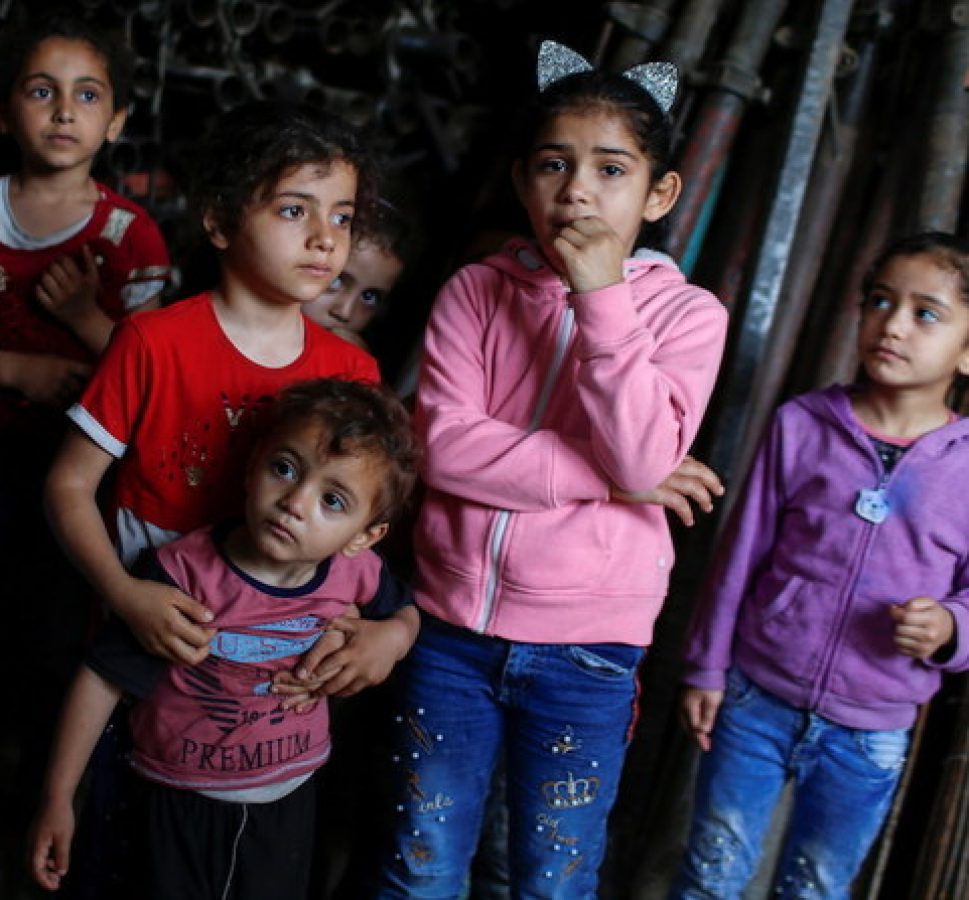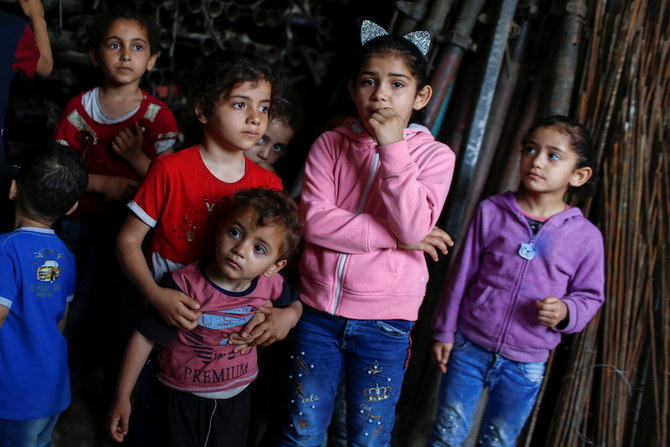
More than a hundred children have been killed on a daily basis since the conflict in Gaza began on 7 October and, for many, a happy childhood is little more than a distant dream.
When Gaza’s southern border crossing opened up, briefly, a few thousand of the enclave’s 2.3 million people were recently able to escape to safety.
“My daughter asked me about the people leaving through the Rafah crossing,” says Raida, a mother of three who lives in Gaza.
“I explained to her that they have citizenship from other countries. She ran to get her piggy bank, which had 50 shekels [about €11] in it, and begged me to buy her a citizenship.”
“I am exhausted,” she says.
The heartbreaking story underscores just how desperate people are in Gaza, and how the deadly conflict has impacted children particularly hard.
“A humanitarian catastrophe is unfolding in Gaza, with unimaginable and unnecessary suffering,” Jason Lee, Save the Children’s Country Director in occupied Palestinian territory tells Euronews.
It’s a desperate picture in the region, more than a month on from the start of the conflict.
Upwards of 4,000 children have been killed so far – a hundred each ady – and countless more injured, often seriously.
“This number is still rising,” Lee adds, “For those children who survive the bombs and ground operations, many will die from disease, starvation, and dehydration if humanitarian aid continues to be weaponised”.
“Every war is a war against children. A child is a child, no matter where they are from, and must be protected. Children are always the most vulnerable in every conflict. We know from experience that children will never emerge unscathed from any conflict.”
Save the Children
On Thursday, the United States announced that Israel had agreed to a four-hour humanitarian pause every day to get much-needed aid into the besieged Gaza strip.
Toby Fricker of UNICEF, the United Nation’s wing responsible for providing humanitarian and developmental aid to children, says that those pauses will be crucial as the conflict rages on.
“Medical facilities and hospitals are in dire need of aid deliveries to bolster their resources,” he told Euronews, “They’re under such strain, especially when it comes to helping women who are giving birth, babies who are in incubators, children who are living with cancer, children who need dialysis, to name just a few examples.”
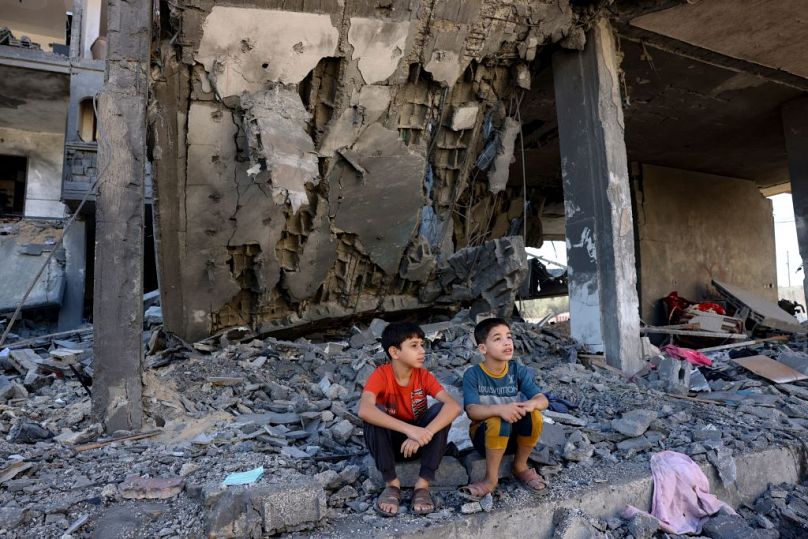
“A humanitarian pause is what the children need and they need it now.”
Toby Fricker
UNICEF
Aid workers on the ground in Gaza say that, due to the circumstances of the war, hundreds of thousands of people are forced to live in extremely close confines together.
Existing in such a way runs the risk of outbreak of disease, not least because the sanitation conditions are very challenging, especially when it comes to toilet facilities and massively overstretched water resources.
Before the conflict began on 7 October, UNICEF were already working with thousands of children, struggling with the pressures of living somewhere as unstable as the Gaza strip.
“Around half the child population, some 500,000, needed some form of mental health or psychosocial support,” Fricker explains, “They were living through fairly regular escalations of hostilities. They were living in a heightened sense of anxiety day in, day out, with fear of what could happen.”
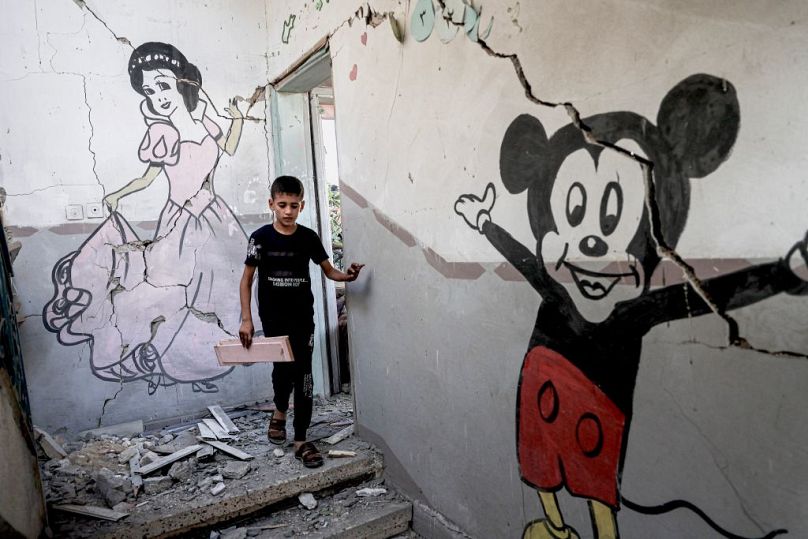
Clearly, then, many of the children of Gaza had already experienced significant blows to their mental and physical well-being.
Fricker adds that the unprecedented escalation means children are now purely “struggling to survive”.
On top of the thousands of young people killed in the fighting, an estimated 300,000 children are currently suffering from various forms of malnutrition.
As the days go by, authorities are warning that this figure could rapidly grow, as well as the likelihood of an increase in waterborne diseases, children getting dehydrated after drinking contaminated or salty water – often the only liquid available – and those who aren’t able to get the vaccines they so desperately need to keep healthy.
Even before these afflicted children are even born, life is already a struggle for them.
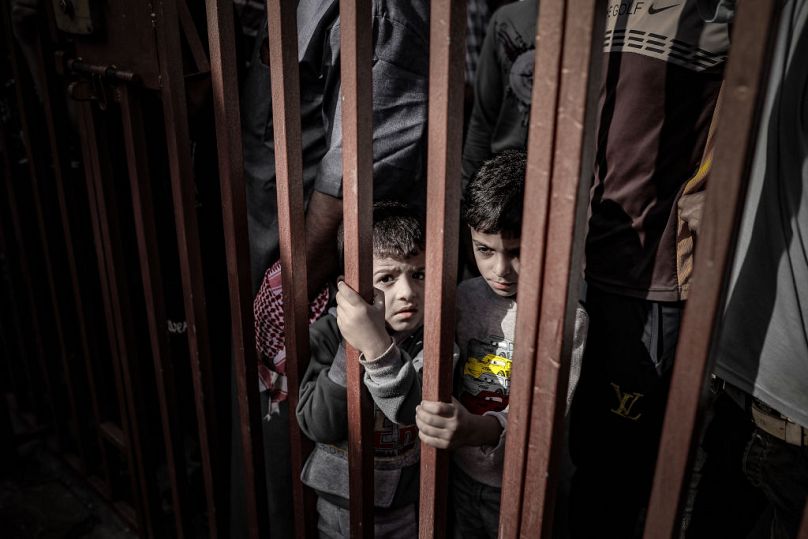
In Gaza, there are an estimated 50,000 pregnant women requiring maternal health services and around 5,500 births each month.
20-year-old Bayan is seven months pregnant. When approached by UNICEF, she explained that, instead of the joyful anticipation that should accompany pregnancy, she is filled with an overwhelming terror.
“In my darkest moments, I wonder how I will ever get to the hospital when the roads are damaged, and transportation is non-existent. And even if I somehow make it to the hospital, will they be able to deliver my precious baby safely? The hospitals are overflowing with the injured and the dead,” Bayan says.
“Tragically, nowhere is safe in the Gaza Strip today. UN schools, public schools, health facilities and other locations where people are sheltering have been hit.”
UNICEF
Even after these children are born, Fricker told Euronews “there’s no childhood for them”.
While UNICEF and other charities and aid workers on the ground are attempting to provide psychosocial support for these children and provide them with a safe space to simply be young, it’s a near-impossible task.
Many of them are sheltering in schools they should be attending. In relatively peaceful moments, Fricker says workers “try to give children an hour of childhood so that they can temporarily forget about the horrors around them”.
“Of course, it’s not enough,” he adds.
There have been countless reports of children resorting to self-harm – ripping hair out of their heads and scratching their skin until they bleed.
Many have panic attacks and early signs of PTSD, terrified over what will happen to them and their families.
According to international law, governments are responsible for providing humanitarian and developmental aid to children – something that is proving concerningly hard in the Gaza conflict.
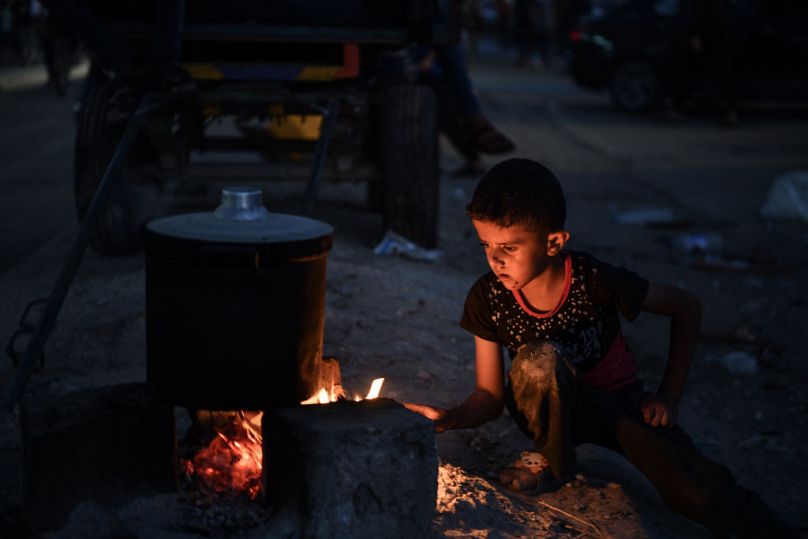
When asked about the future for these children living in what amounts to a hellscape, Fricker told Euronews: “right now no child, no family, no parent inside the Gaza Strip can even think of the future. UNICEF staff members on the ground speak about living not just day by day, but second by second.”
“The immediate needs for young people in Gaza are so acute that it’s very, very difficult to even think past the next hour, past the next day and certainly not, say, a year ahead. We don’t know when the conflict will end so, for now, part of the international community’s priority is to try to resume some sort of childhood for these youngsters wherever possible,” he added.




